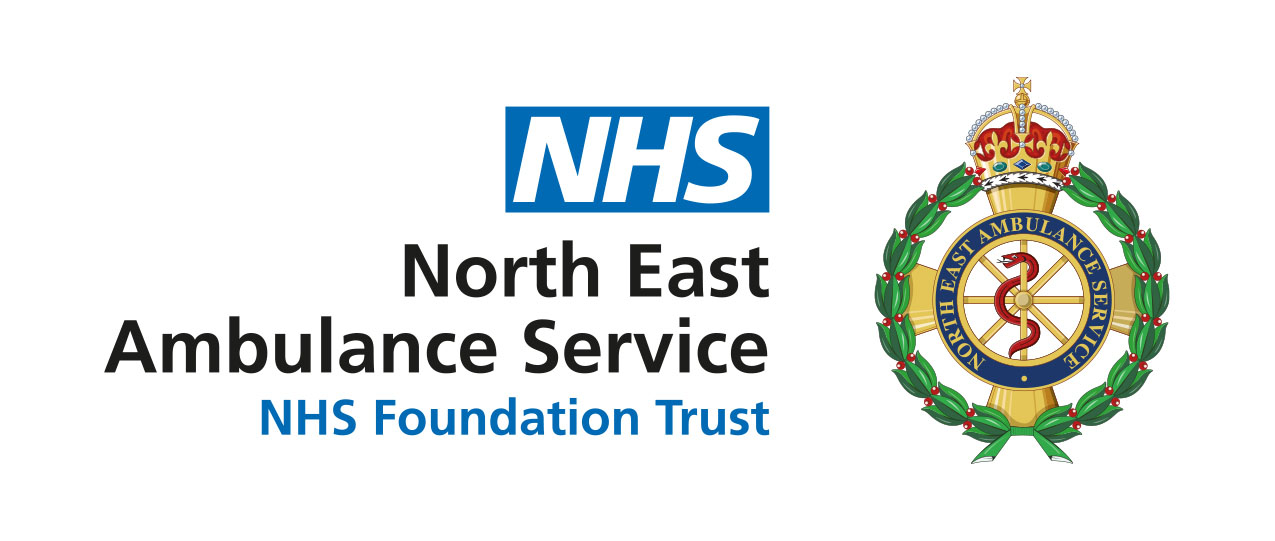Horse rider back in the saddle is reunited with crew who saved her life
A Teesside horse rider has thanked the North East Ambulance Service (NEAS) crew that saved her life after she was kicked by her horse earlier in the year.
Leah Findlay, 46, sustained broken ribs, internal bleeding and a ruptured spleen after being kicked by her horse at the yard she stables it at.
Her friend who was with her at the time raised the alarm and she was rushed into James Cook University hospital by paramedic Kevin Cook and clinical care assistant Thomas Tasane.
Now, after five months of recovery and the lifting of lockdown restrictions, Leah has been able to meet the crew in a safe environment at the stables where Leah keeps her horse CJ along with her other horse Bobby.
Kevin has worked at the Trust for 17 years and remembers the job well. This is what he said, “We arrived to find Leah on her knees leaning forwards on the floor, she was in obvious pain. We used gas and air to provide some basic pain relief which allowed us to get Leah onto our stretcher and then onto the vehicle.
“On closer examination in the vehicle, it was obvious that Leah had an unstable rib fracture and the mechanism of her injury also suggested the possibility of serious underlying soft tissue injury.
“Her pain was managed with IV morphine and a pre alert was given by phone to James Cook University hospital. Leah was transported on blue lights and sirens and just before arriving, Leah developed low blood pressure with some tummy pain, which the consultant at the hospital then began to assess.”
Thomas, who has worked at NEAS for eight years said, “Leah’s injuries were definitely life threatening and without rapid transport, the outcome could have been totally different.
“Leah did keep her sense of humour throughout and it was a pleasure to have had the opportunity to treat her even though we had to cut her horse riding gear off.”
Once admitted to hospital, the pain in Leah’s tummy was serious as she began to bleed internally. She was immediately rushed into surgery for an emergency splenectomy to stop the internal bleeding.
A part-time equine behavioural psychologist and administrator/ accountant for a land and engineering surveying partnership she runs with her husband, Leah said, “The events of that day were pretty typical for me before the incident. I was walking my beautiful thoroughbred in-hand as he had been on box rest with a ligament injury. He's commonly known for being hot headed and over reactive but is a sweet natured horse.
“Something startled him, and he leapt in the air kicking out with both hind legs. Unfortunately, I couldn't get out of the way in time and he made full contact with the left side of my torso. At first, I thought I was just winded but when I went to get up, I realised something more had occurred.
“I was lucky to have several friends nearby who all suggested an ambulance was called but I still didn't think it was too serious at the time. A few broken ribs were all I thought. However, I started to feel very peculiar and my condition deteriorated. I eventually agreed that an ambulance should be called and when it arrived, I was struggling to remain conscious.
“Although I was very frightened by this point the professionalism of the ambulance crew and the way they cared for me helped ease some of my fear. I truly believe their actions saved my life.
“I owe my survival not only to the staff at James Cook University hospital but especially to the ambulance crew for their speedy and professional actions. I just want them to know I am eternally grateful.”
Leah’s road to recovery was a slow and steady process but she looks forward to getting back in the saddle. “I've not been put off at all though, much to the surprise of many. I'm looking forward to getting back in the saddle after my physical injuries have healed. I still love CJ as much as ever.”
Notes to editors
For more information, contact the NEAS press office on 07559 918672 or email publicrelations@neas.nhs.uk
About the North East Ambulance Service
North East Ambulance Service NHS Foundation Trust (NEAS) covers 3,200 square miles across the North East region. It employs more than 2,600 staff and serves a population of 2.7 million people by handling all NHS111 and 999 calls for the region, operating patient transport and ambulance response services, delivering training for communities and commercial audiences and providing medical support cover at events.
In 2018/19 we answered more than 1.4m emergency 999 and NHS 111 calls, with almost 290,000 patients taken to hospital, 21,500 treated and discharged over the phone and more than 100,000 treated and discharged at home. Almost 76,000 emergency incidents were reached within seven minutes and more than 570,000 Patient Transport Service journeys were made. Over the year we responded to almost 6,000 road traffic incidents. 6,300 people were trained in CPR and defibrillator awareness and 167 new community defibrillators were registered.
